Colt and his revolver: beyond the legend
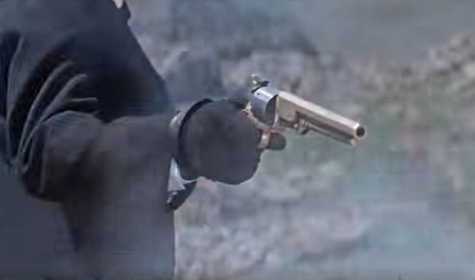
Most often we see Colt revolvers like this in movies. But they didn’t become like that right away. And in the beginning it was something completely different... Still from the film “Trace of the Falcon” (1968)
Lubricate the Winchester properly,
And go on the road, because
Has taken a whim into your head.
Y. Kim, music. G. Gladkov
"A man from the Capuchin Boulevard"
stories about weapons. Since 2015 and even earlier, the VO website has been writing about various weapons, and it seems like there is nothing left that we, its authors, haven’t managed to write about during this time. Therefore, it is not surprising that each “new step” is more difficult than the previous one, not to mention the fact that it is difficult, for example, to write something new about the same “Colt”. It's difficult, but it's possible!
So today we will tell you, our dear readers, about how Samuel Colt himself began as a weapons designer and how his very first revolver was created, from which his career as a gunsmith began.
Yes, we all know the legend, but what was behind it in reality, who, how much and for what he paid, who worked for him as a file, and what Colt himself was doing at that time. That is, we will tell you about his life at this very time without any embellishment...
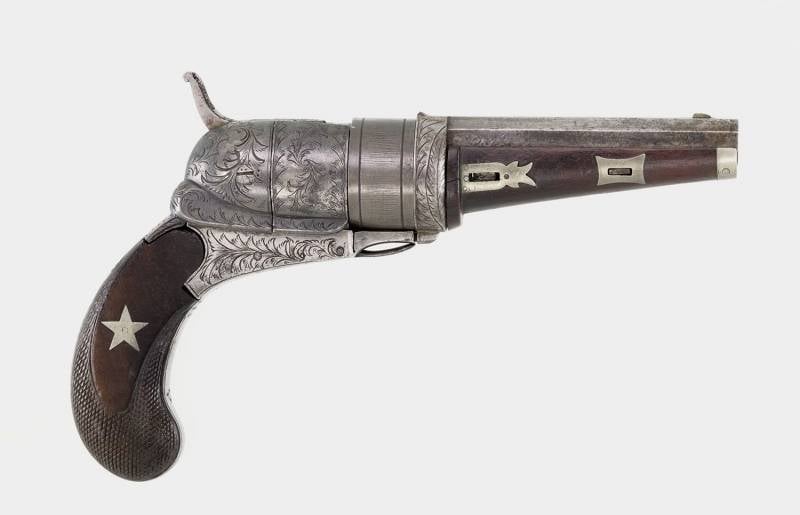
One of the very first Colt revolvers, made by master craftsman John Pearson. 1835, Baltimore. Caliber .33 (8,3 mm). Wadsworth Atheneum Museum of Art, Hartford, Connecticut, USA
It happened that Samuel Colt arrived in Baltimore, Maryland, on a cold February day in 1834. Moreover, at that time he was busy organizing performances in which he allowed the audience to breathe nitrous oxide (“laughing gas”), which caused them a harmless form of intoxication. This attraction gave him a good income, but that was not all.
In addition, Colt was also a “traveling lecturer” and gave educational lectures on natural philosophy and chemistry, and the time that he had left after the lectures, yes, he devoted to working on his pistol with a rotating magazine.
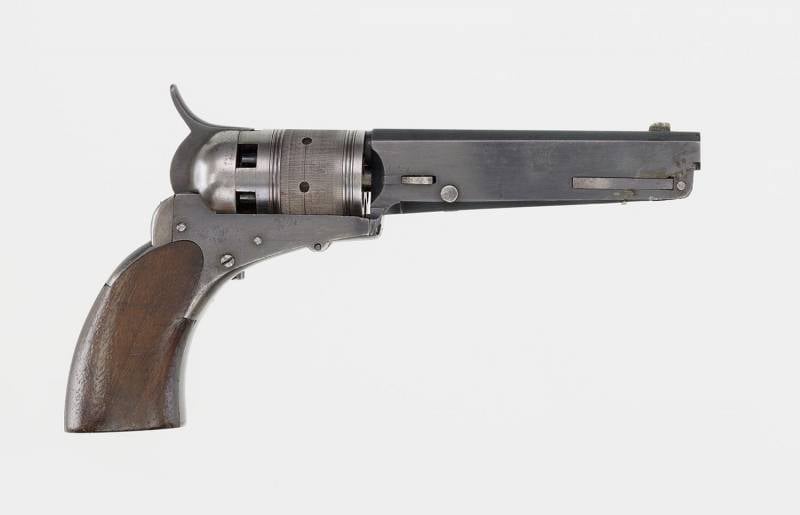
The second version, made in the same 1835. Caliber 8,3 mm. Wadsworth Atheneum Museum of Art, Hartford, Connecticut, USA
In late 1832 or early 1833, he hired gunsmith Anson Chase in Hartford, Connecticut (note that Colt himself was 18 years old at the time) to translate his ideas into metal, because Colt himself did not know how to work with metal.
He managed to allocate $15 for the production of the first prototype, but it exploded during testing. A rifle and pistol were then made, also made by Chase, which he had already submitted to the US Patent Office. But their quality was such that he was not given a patent for them, although he managed to obtain an affidavit (written testimony under oath) about the priority of his invention.
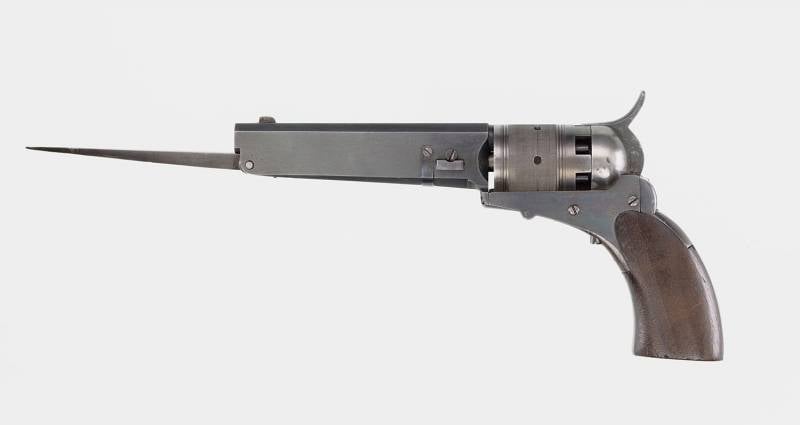
Interestingly, this revolver was equipped with a folding bayonet! Wadsworth Atheneum Museum of Art, Hartford, Connecticut, USA
For all his work for Colt, Chase was paid just under $125.
Colt also entered into a contract with Samuel Gibson, an Albany gunsmith, to whom he paid $11 to use the forgings to make an experimental model of his pistol. By May 24, 1833, Colt had spent $415 and 12½ cents on work on two rifles and several pistols, including one made entirely of brass.
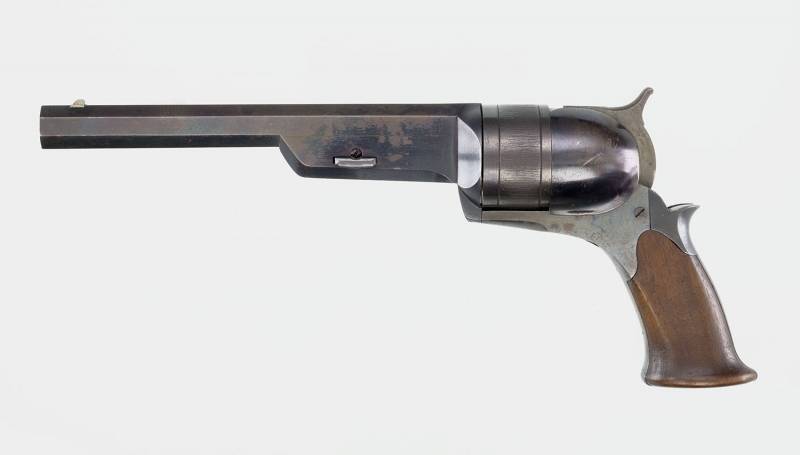
Prototype of a belt revolver. John Pearson, 1835-1836. Caliber .53 (9,6 mm). A special feature of this revolver was a closed drum on all sides. Wadsworth Atheneum Museum of Art, Hartford, Connecticut, USA
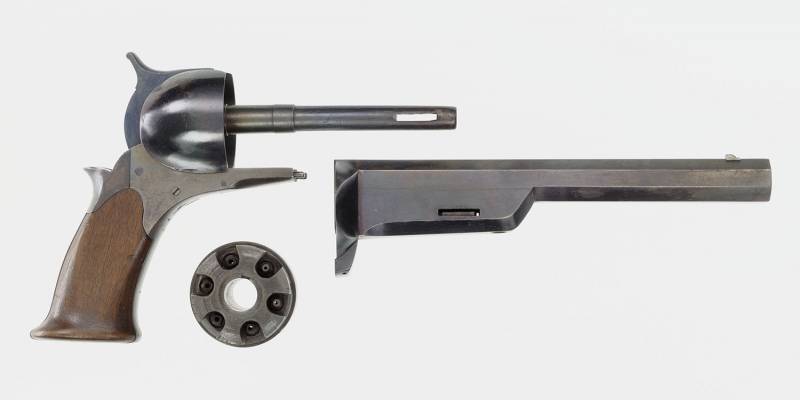
The same prototype disassembled
He still did not have enough money to pay the workers, but then Colt received an invitation to the position of lecturer at the museum, which turned out to be a very profitable occupation, which is why he remained in Baltimore.
The museum was run by Joseph E. Walker, probably a close relative of Captain Samuel Hamilton Walker of Baltimore and Texas, who would later play such an important role in Colt's future. The museum was strange - a disorganized collection of odds and ends. But since at that time there was a kind of renaissance in the field of education and people’s increased desire for knowledge, smart people made good money from it.
While walking around Baltimore, Colt met A. T. Baxter, one of the best and most talented gunsmiths in the city. Baxter himself also never refused part-time work, so after talking with Colt, he assigned one of his best specialists, John Pearson, to work for him.
So the following entry appeared in Colt’s diary: “Baltimore, March 1 (1834) 14 days of work on A. T. Baxter’s rifle, $28.” Again, we were talking about a rifle with a .52 caliber drum, a total length of 134,5 cm and a weight of 3,8 kg.
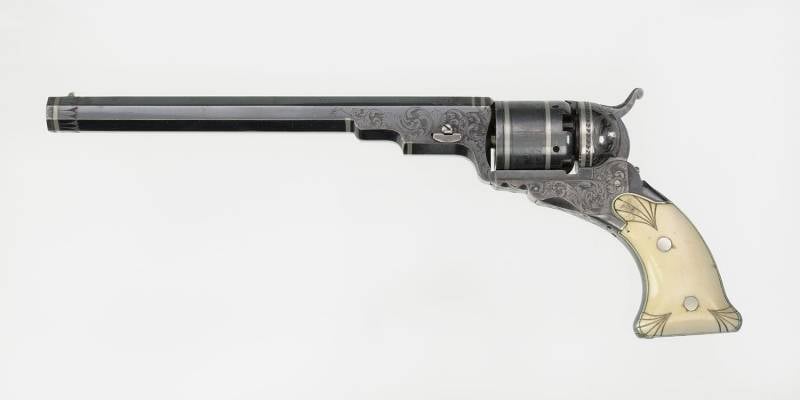
"Belt pistol No. 5." Patent Arms Company of New Jersey, Paterson, ca. 1838 Total length: 330 mm. Barrel length: 203 mm. Wadsworth Atheneum Museum of Art, Hartford, Connecticut, USA
John Pearson himself was trained as a watchmaker in England before coming to America. He was born around 1806 and was 28 years old when Colt found him (he was 19).
By the way, it is quite possible that John was a relative of James Pearson, a gunsmith who in 1780 entered into a contract with the Pennsylvania Committee of Safety for the supply of muskets.
Interestingly, Pearson considered his work for Colt through Baxter too expensive for Colt and unprofitable for himself. Therefore, he made an offer to Colt that if he could find a workshop, he would work for Colt without intermediaries.
An agreement was concluded between them as follows:
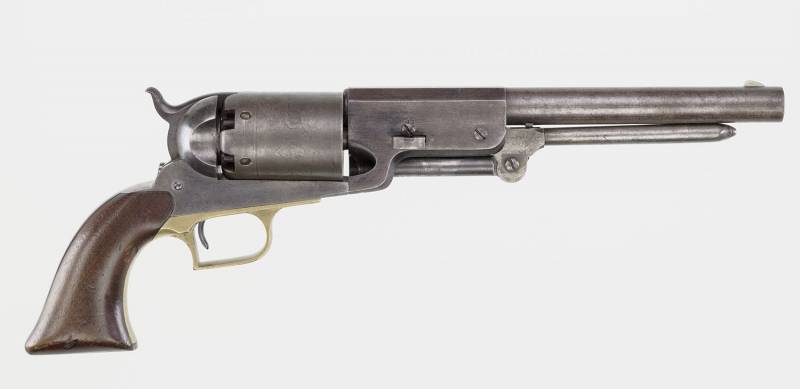
"Colt" model 1847 "belt pistol". Produced by Eli Whitney, Whitneville, Connecticut. Barrel length: 203 mm. Caliber: .44 (11,8 mm). Wadsworth Atheneum Museum of Art, Hartford, Connecticut, USA
A place for the workshop was soon found, equipment for it was purchased, and Pearson began to work.
What did Colt do?
I took a can of nitrous oxide and went on to rip off the simpletons. From time to time he sent money ($50) to Pearson's account. However, he took a fairly active part in the work on the pistol. In the second half of 1834, he wrote to him about how many charges a rifle drum should be equipped with and what his pistol should look like.
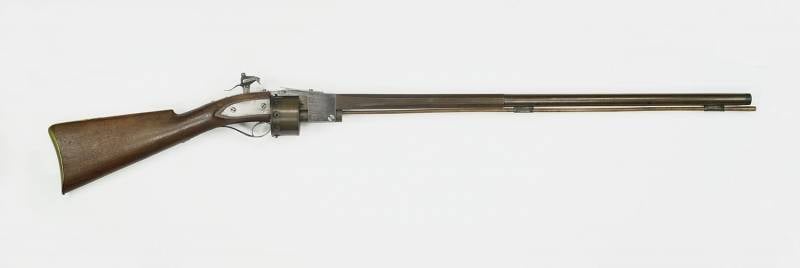
This was a time when drum rifles were very popular and many people tried to make them. Rufus Porter Flintlock Drum Rifle, Billerica, Massachusetts, 1826. Made in Boston. Caliber .42 (10,6 mm). Wadsworth Atheneum Museum of Art, Hartford, Connecticut, USA
Apparently, at the end of 1834 or at the beginning of 1835, its prototype was made.
Interestingly, the distinctive feature of Pearson’s work was precisely the bag-shaped handles. Meanwhile, Dr. Colt continued its tour across Canada, from Montreal to Quebec City, just as both cities were experiencing cholera outbreaks.
Attendance at his lectures dropped, so he turned toward St. John's and New Brunswick. Finally, on September 29, 1834, he managed to contact his friend (and Pearson's cashier) Walker in Richmond and promise to pay him promptly.
And then in his next letter to Walker dated October 12, 1834, he demanded that Pearson focus all his attention on pistols and not deal with guns yet! That is, it turns out that it was Pearson who brought to life all the first revolvers of Samuel Colt, and at that time he was touring the country!
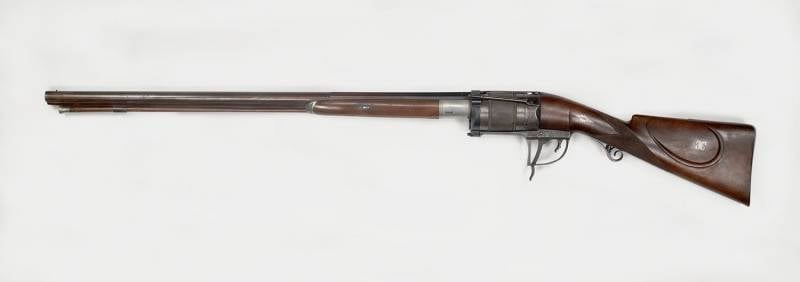
John Pearson Drum Rifle, 1834–1835. Baltimore. Caliber: 16,7 mm. Wadsworth Atheneum Museum of Art, Hartford, Connecticut, USA
And since there was still not enough money, Colt decided to start smuggling. He invested several hundred dollars in purchasing fine fabrics in St. John's, and he knew about fabrics, since Colt's father, Christopher, was a famous fabric merchant and taught his son all the intricacies of choosing quality textiles.
Colt decided he could get the fabric past U.S. Customs officials at the port of Providence, Rhode Island. However, he found the customs officer attentive and confiscated one bale of contraband. True, he still managed to smuggle another bale of fabric, inside of which there was also a music box hidden.
But Colt was no longer involved in this matter.
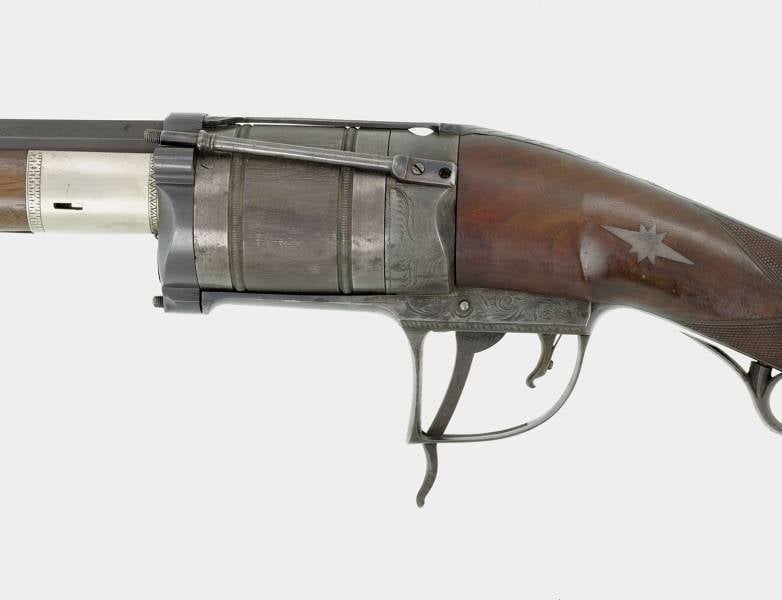
A close-up of the drum of this rifle and the lever that turns it...
Then Colt met with Pearson and began to literally explain to him his vision of the new pistol, and all because he... was not a draftsman and could not make accurate drawings for him.
At the beginning of 1835, Colt went to Richmond and again stopped paying money. The situation escalated so much that Pearson threatened to quit his job and go elsewhere. Again, in a letter dated January 17, 1835, Colt promised to pay him on time and not only promised, but also sent him a transfer for $75.
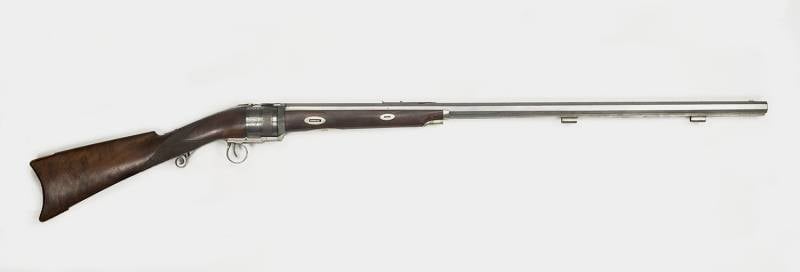
John Pearson's first model of a drum rifle, 1835 Baltimore. Caliber: .36 (9,14 mm). Wadsworth Atheneum Museum of Art, Hartford, Connecticut, USA
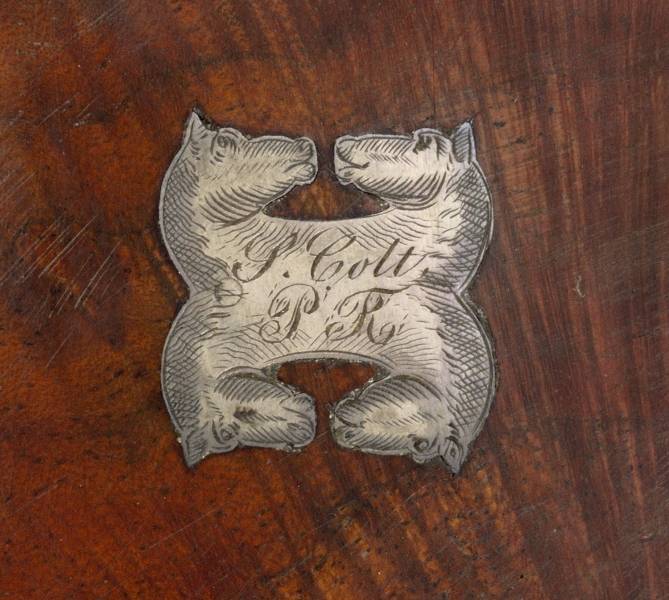
He also asked Pearson to find engravers to make him a trademark in the form of the heads of four horses connected to each other...
Pearson fulfilled the order and wrote a letter to Colt on February 10, 1835, saying that the work was going on, that he had sent him reagents to produce “laughing gas,” but that it was very cold in the workshop, that he had nothing to heat with and urgently needed to send money for firewood.
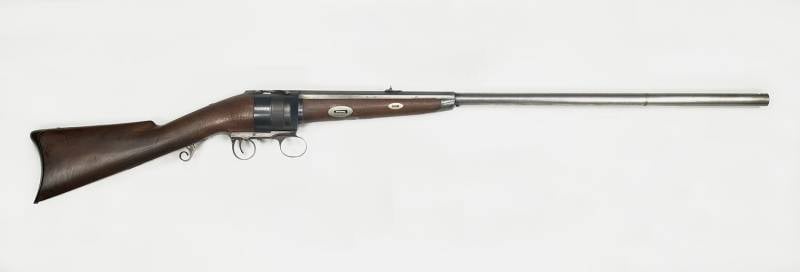
John Pearson's second model drum rifle, 1835 Baltimore. Caliber: .53 (13,4 mm). Wadsworth Atheneum Museum of Art, Hartford, Connecticut, USA
Colt himself rushed to Lynchburg for his lectures, where they were a success, so that he was able to send Pearson $50, which he believed would tide him over until his return to Baltimore in mid-April.
The most important thing that he managed to do with the money he earned was the opening of a new workshop on May 10, 1835. Another worker was hired, receiving $7,5 a week, while Pearson's salary was increased to $12.
Well, Colt himself, having borrowed $2, went to Liverpool on August 000, 24, and from there to London to patent his revolver, which he had previously decorated with engraving and bluing. The total cost of the patent cost him more than $1835 in gold.
On February 25, 1836, he was issued US Patent No. 138, signed by President Andrew Jackson himself.
Unfortunately, the patent office burned to the ground shortly thereafter. However, enough evidence was collected for such a patent to actually be granted. By the way, the drawings and drawings required to obtain a patent cost him $16!
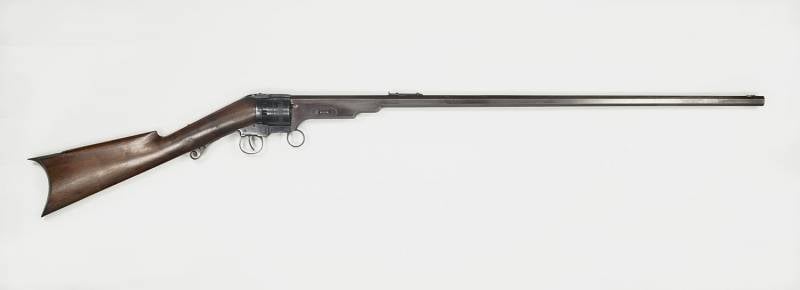
John Pearson's Third Model Drum Rifle, 1838. Patent Arms Company. New Jersey, Paterson. Caliber: .34 (8,6 mm). Wadsworth Atheneum Museum of Art, Hartford, Connecticut, USA
Pearson's last letter to Colt is dated May 9, 1836. In it, he wrote that Colt owed him at least $100 and did not want to pay it. The letter ended with the following words:
All in all, Sam Colt clearly had a bad habit of using people as stepping stones to success and then later forgetting about them. And John Pearson in this case was no exception. He no longer worked at the Paterson factory because he could not come to terms with the fact that there he would be on the sidelines.
A certain Pliny Lawton of Springfield, Massachusetts, hired him to manage the operation, and John Pearson remained in Baltimore until about 1840, after which he moved to St. Louis, Missouri, and then to Fort Smith in Arkansas.
But Colt still remembered him in 1861 and immediately paid $30 - a fortune at that time!
Information